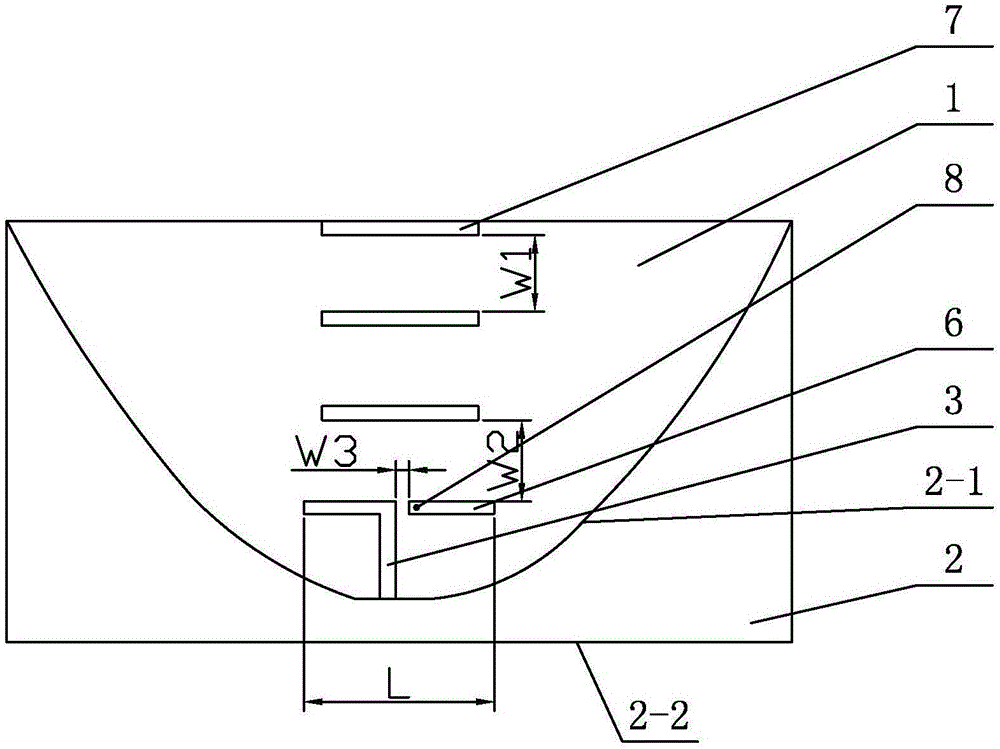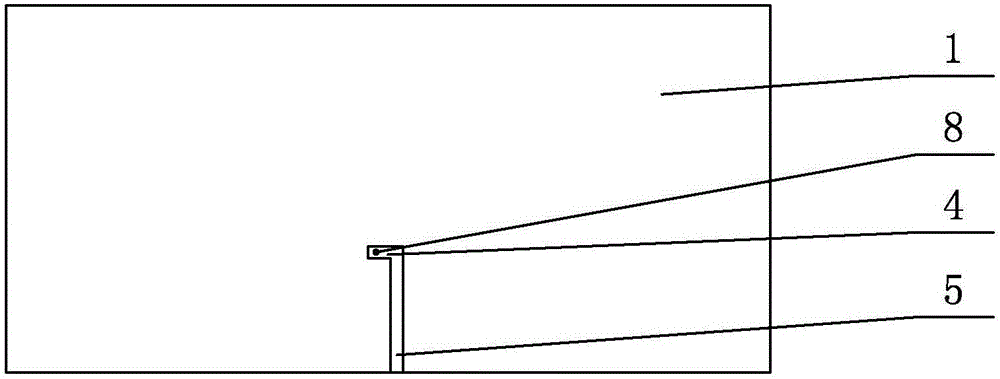Novel high-gain printed quasi-yagi antenna
A high-gain, quasi-Yagi technology, applied in the direction of antennas, electrical components, etc., can solve the problem of small gain of quasi-Yagi antennas, and achieve the effect of good matching, high gain, and good radiation enhancement effect
- Summary
- Abstract
- Description
- Claims
- Application Information
AI Technical Summary
Problems solved by technology
Method used
Image
Examples
specific Embodiment approach 1
[0007] Specific implementation mode one: combine figure 1 and figure 2 To illustrate this embodiment, a new type of high-gain printed quasi-Yagi antenna described in this embodiment includes a dielectric substrate 1, a reflector 2, a front elongated feeder 3, a rear rectangular feeder 4, a rear elongated feeder 5, two The source oscillator arm 6 and the three guide oscillators 7, the reflector 2 is printed on the lower part of the front of the dielectric substrate 1, the reflector 2 is a closed metal layer composed of a concave parabolic side 2-1 and a straight line side 2-2, and The straight side 2-2 of the reflector 2 coincides with the bottom edge of the front of the dielectric substrate 1, and the three guiding vibrators 7 are printed sequentially on the upper part of the front of the dielectric substrate 1 from top to bottom, and the two active vibrator arms 6 are in the shape of a line Printed on the middle of the front surface of the dielectric substrate 1, two active...
specific Embodiment approach 2
[0009] Specific implementation mode two: combination figure 1 and figure 2 Describe this embodiment, the length of the dielectric substrate 1 of a novel high-gain printed quasi-Yagi antenna described in this embodiment is 180 mm, the width of the dielectric substrate 1 is 100 mm, and the thickness of the dielectric substrate 1 is 1.6 mm.
[0010] The technical effect of this embodiment is that: with such an arrangement, the impedance and radiation characteristics of the antenna are good. Other components and connections are the same as those in the first embodiment.
specific Embodiment approach 3
[0011] Specific implementation mode three: combination figure 1 and figure 2 To illustrate this embodiment, the length of the straight side 2-2 of the reflector 2 of a novel high-gain printed quasi-Yagi antenna described in this embodiment is 180 mm.
[0012] The technical effect of this embodiment is that: with such an arrangement, the impedance and radiation characteristics of the antenna are good. Other components and connections are the same as those in the first embodiment.
PUM
| Property | Measurement | Unit |
|---|---|---|
| Length | aaaaa | aaaaa |
| Width | aaaaa | aaaaa |
| Thickness | aaaaa | aaaaa |
Abstract
Description
Claims
Application Information
 Login to View More
Login to View More - R&D
- Intellectual Property
- Life Sciences
- Materials
- Tech Scout
- Unparalleled Data Quality
- Higher Quality Content
- 60% Fewer Hallucinations
Browse by: Latest US Patents, China's latest patents, Technical Efficacy Thesaurus, Application Domain, Technology Topic, Popular Technical Reports.
© 2025 PatSnap. All rights reserved.Legal|Privacy policy|Modern Slavery Act Transparency Statement|Sitemap|About US| Contact US: help@patsnap.com


